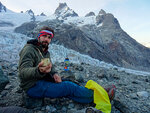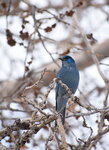Cloudy, 53° F
We’re all familiar with the expression “bird brain,” generally intended as an insult meaning a person of limited intelligence. At the next Draper Natural History Museum Lunchtime …
This item is available in full to subscribers.
The Powell Tribune has expanded its online content. To continue reading, you will need to either log in to your subscriber account, or purchase a subscription.
If you are a current print subscriber, you can set up a free web account by clicking here.
If you already have a web account, but need to reset it, you can do so by clicking here.
If you would like to purchase a subscription click here.
Please log in to continue |
|


We’re all familiar with the expression “bird brain,” generally intended as an insult meaning a person of limited intelligence. At the next Draper Natural History Museum Lunchtime Expedition lecture, Corey Anco asks, “Are birds really that simple-minded?”
Anco, the Willis McDonald IV Curator of Natural Science for the Draper Museum at the Buffalo Bill Center of the West, answers the question by exploring the story of the pinyon jay (Gymnorhinus cyanocephalus), a member of the Corvidae family of particularly intelligent birds that also includes crows, ravens, magpies, and others.
The free presentation is titled “Corvids and Conifers: The Unusual Case of the Pinyon Jay,” and takes place Thursday, Feb. 1 at noon in the Center of the West’s Coe Auditorium. Those who prefer to attend the talk virtually via Zoom webinar may do so by registering in advance at us02web.zoom.us/webinar/register/WN_uvO66q_mQSuyyW-jvDhZ5g.
The pinyon jay is named for its close association and dependency on the pinyon pine. But while northwestern Wyoming supports a population of pinyon jays, pinyon pines are not found this far north. Anco discusses how the close relationship between the jays and the conifer developed, as well as how the pinyon jay survives in northwestern Wyoming without the pinyon pine.
“We provide a bird’s eye view of the unique suite of characteristics and strategies that pinyon jays evolved to respond to changing pressures and conditions,” Anco says. After an overview of existing research on the pinyon jay, he shares details of an upcoming study that the Draper and collaborative partners are launching in 2024.
The Draper Museum’s Lunchtime Expedition lecture series, which takes place the first Thursday of the months of February through December, has been made possible through support from Sage Creek Ranch and the Nancy-Carroll Draper Charitable Foundation. The March 7 talk features the wildlife photography of Julia Cook.
Anco started at the Draper Museum as assistant curator in 2017 and has been curator since November 2022. He previously pursued opportunities with the U.S. Forest Service, U.S. Fish and Wildlife Service, U.S. Geological Survey, and National Geographic Society’s Big Cats Initiative. His fieldwork experience ranges from the tallgrass prairies of the Midwest and tundra of the Alaska Peninsula to Neotropical rainforests in Belize and the concrete jungle of New York City. This background has fostered comprehensive exposure to wildlife responses following habitat disturbance.
Anco also has extensive experience in teaching ecology and communicating science to youth groups, high school, and undergraduate students with the Wildlife Conservation Society. He earned a Bachelor of Science from Lewis University, Master of Environmental Management from Duke University, and Master of Science in Biology from Fordham University.
A certified interpretive guide through the National Association for Interpretation, Anco also holds certifications in geospatial analysis and chemical immobilization of wildlife. His interest in joining the Draper Natural History Museum stemmed from his experience in working with museums and their collections to inspire and promote understanding, appreciation, and conservation of wildlife and wildlands.